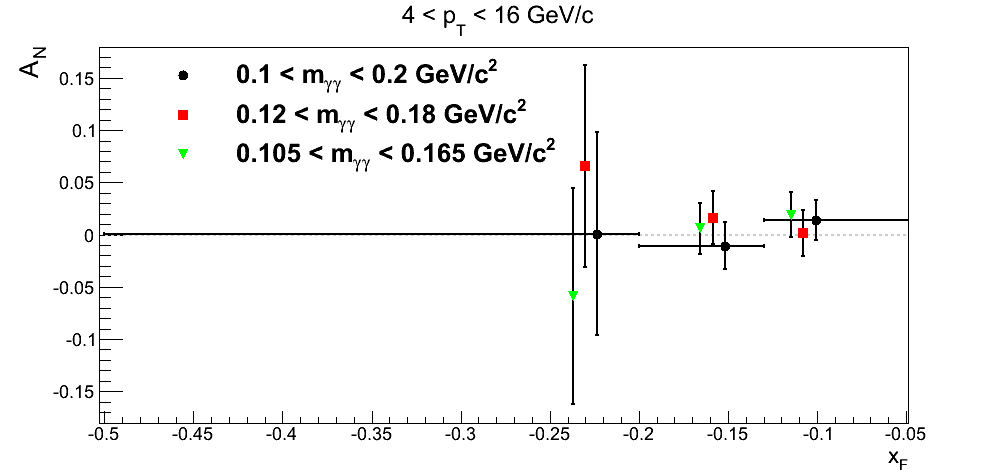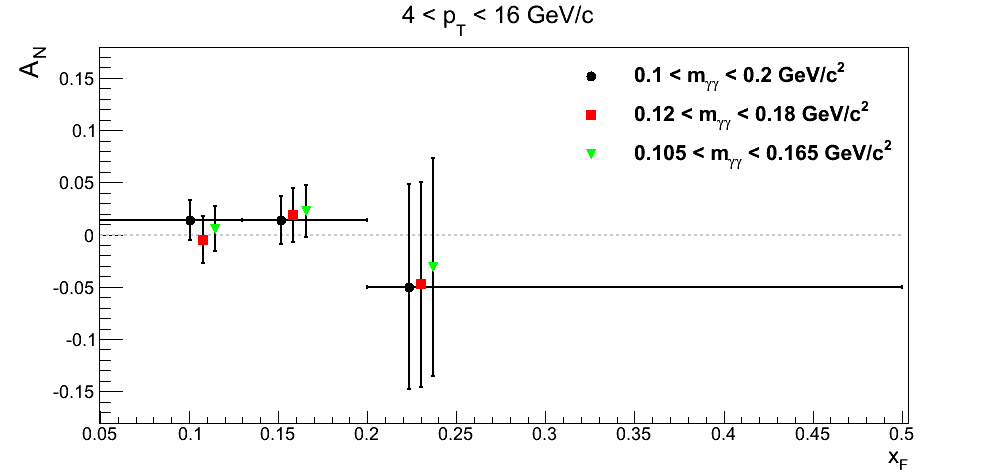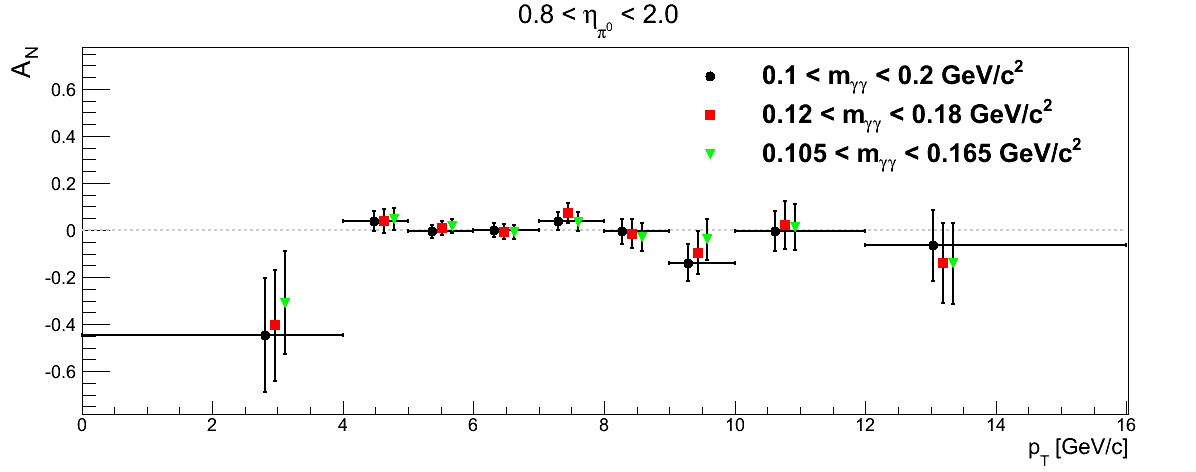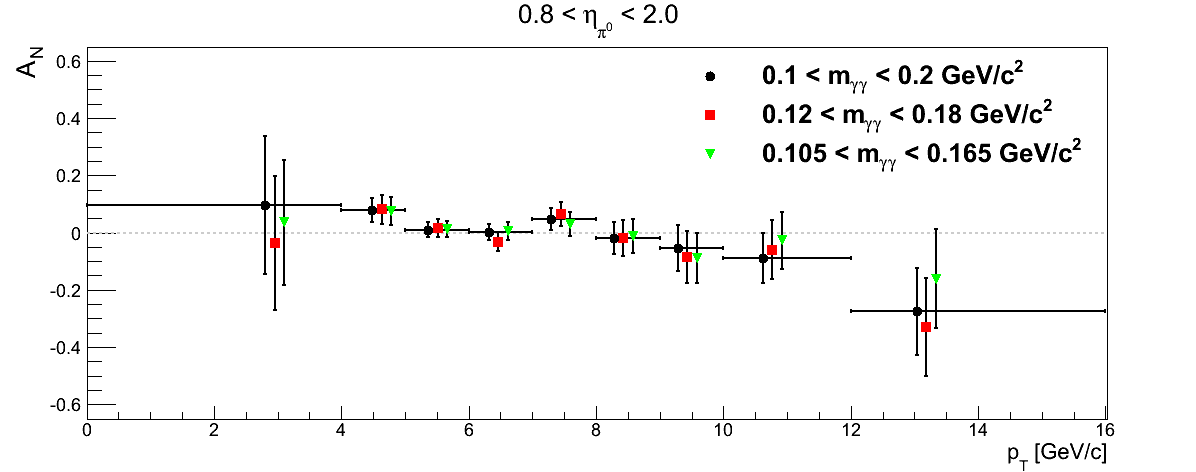- drach09's home page
- Posts
- 2022
- 2020
- June (1)
- 2019
- 2018
- 2017
- 2016
- 2015
- 2014
- December (13)
- November (2)
- October (5)
- September (2)
- August (8)
- July (9)
- June (7)
- May (5)
- April (4)
- March (4)
- February (1)
- January (2)
- 2013
- December (2)
- November (8)
- October (5)
- September (12)
- August (5)
- July (2)
- June (3)
- May (4)
- April (8)
- March (10)
- February (9)
- January (11)
- 2012
- 2011
- October (1)
- My blog
- Post new blog entry
- All blogs
2006 EEMC Neutral Pions: Background Correction (Mass Window Comparison)
Figure 1: AN vs. xF


Plotted are the central values and statistical uncertainties for the various asymmetry extractions with differing mass windows. For bin-1 in xF > 0, it appears the symmetric mass window does not diverge as much from the nominal window. The same is true in bin-2 for xF < 0. In other cases, the symmetric window diverges a bit more than the asymmetric window but typically the difference is similar.
Figure 2: AN vs. pT


As in Fig. 1, I plot xF < 0 on the left and xF > 0 on the right. There appear to be four cases (one being a bin we shall exclude) where the symmetric window diverges from the nominal central values more so than does the asymmetric window. Overall, however, the symmetric window is either closer to the central values or diverges similar to the asymmetric window. From this study I would argue the symmetric mass window is a better option for this analysis, at the very least for a systematics evaulation. Perhaps, at the end of the day, we will decide a symmetric window works better for the central values, as well. However, this is probably a secondary concern to other issues, at the moment.
- drach09's blog
- Login or register to post comments
